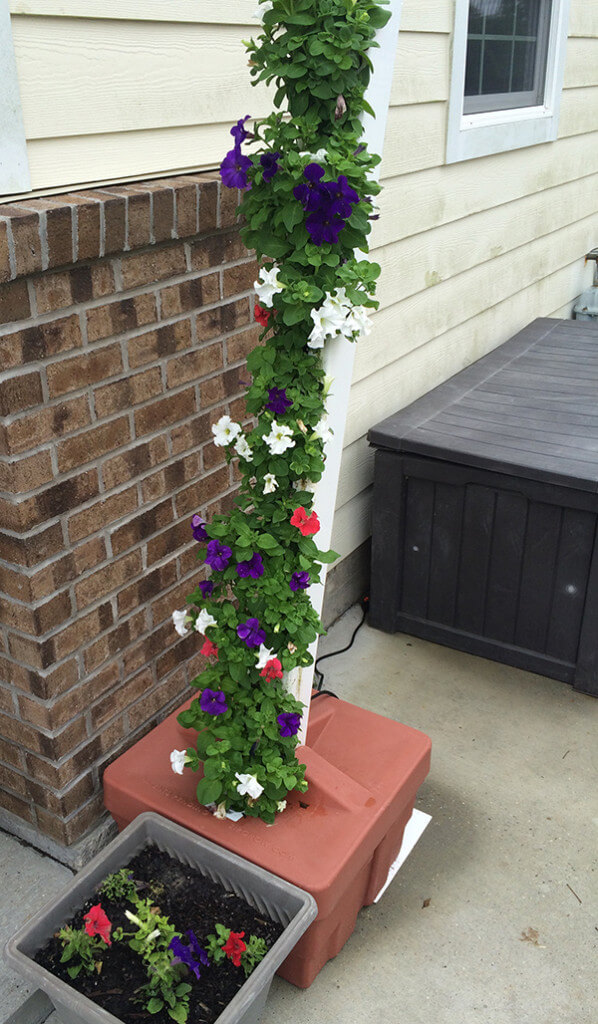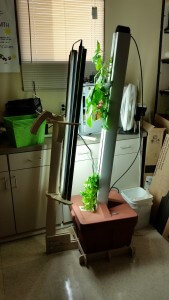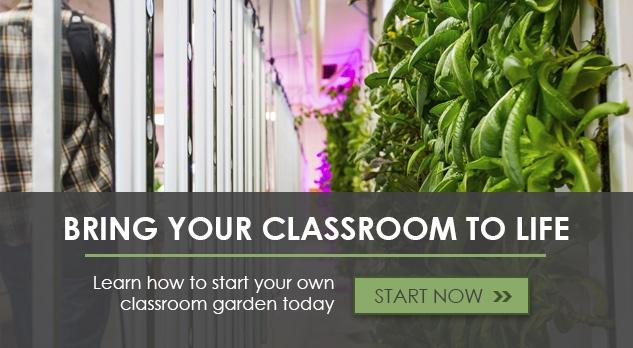So you’ve planted your Spring System…
Once seedlings have been transplanted into the Spring, many growers get anxious for the plants to grow big and strong like you see in the pictures. But like anything else, you have to give it time. Don’t panic if your plants havent tripled in size the first week or two!
 Easier said than done, right? We know this is hard, especially when you have a classroom full of students, supervisors, and sometimes even grant-requirements watching over your shoulder.
Easier said than done, right? We know this is hard, especially when you have a classroom full of students, supervisors, and sometimes even grant-requirements watching over your shoulder.
We are going to tell you what to expect when youre expecting to grow in your Spring System, so that you have realistic expectations and can share these with the big (and little) people depending on you.
Plants take time to mature.
Although most plants will grow healthy and fast in ZipGrow towers, they won’t go from seedling to mature plant overnight.
For a good idea on how long it will take your plant to grow to maturity, check your seed packet or check an online resource like this one. This will provide you with information on the growth cycle of the crop.
You can generally expect greens to take 4 or 5 weeks to mature once they have been planted in the ZipGrow tower. Herbs like chives, oregano and mint take longer, but have multiple harvests.
Some plants grow slower than others.
As you will learn by comparing seed packets, some plants grow slower than others. Not all crops are created equal. Most woody plants take longer, as do gradual-harvest crops (chard, kale, and collard greens are examples) and multiple-harvest crops (basil, oregano).
If you have planted a variety in your tower, know that your crops will probably mature at different rates. Some will be ready for harvesting before others. In this case, just prune and/or harvest as necessary, and allow slower growing plants to complete their growing cycle before removing any plants for replanting.
Pollination may be required.
Many fruits and vegetables require pollination. When you grow plants indoors, you separate them from their natural pollinators like bees. Therefore, in order to get them to produce, or at least produce well, you have to pollinate them by hand.
Some common crops people grow in ZipGrow towers that require pollination are:
- Strawberries
- Peppers
- Tomatoes
- Fennel
Most of the time you can hand-pollinate plants by either gently shaking them or using a pollination device like a paintbrush or electric toothbrush to disperse the pollen. Tomatoes are an example of a plant that can be pollinated this way. However, some plants require different pollination practices.
For example, cucurbit plants (plants in the family of cucumbers, squash, etc.) require you to move the pollen to different flowers of different sex, rather than just within the same flower. This can be slightly harder to accomplish, so I would recommend checking out this great article from Bonnie Plants.
It’s always a good idea to do a little research before you plant. If you have already planted your seedlings into the ZipGrow tower, and have noticed that they are not producing as you expected, check to see if they require pollination.
You might need to provide some plants with additional physical support.
ZipGrow towers are made to anchor crops (meaning they hold the plants securely), but this doesn’t mean that they can defy gravity. Growing vertically requires some level of care in helping heavy and/or large-statured plants stave off the effects of gravity.
 Casey Bowe’s classroom Spring with a fan. Photo Cred: Casey Bowe, Greybull Middle School
Casey Bowe’s classroom Spring with a fan. Photo Cred: Casey Bowe, Greybull Middle SchoolOnce seedlings are placed in the ZipGrow vertical gardening towers, they quickly reorient themselves and naturally grow outward and upward toward the light source. However, once some plants reach maturity, their own weight can drag them down.
Tomatoes are a great example of this. Tomatoes are a heavy, and large statured plant. In conventional gardens, they are grow with some sort of trellis structure to keep their stems and branches from sagging. The same can be true when growing vertically.
There are various ways to provide physical support for plants like these.
One way is to simply put a regular wire cage around the ZipGrow tower and train the plant to grow with this structure to support its weight. Or, you can create your own make-shift trellis structure. Just be sure you are not damaging the plant or restricting its growth.
Another option is to encourage the plant to grow in a way that allows it to better physically support itself. For example, Casey Bowe’s class at Greybull Middle School in Greybull, WY uses a fan to blow a light breeze on alternating areas of their strawberry plants’ stems. This encourages the stems to grow stronger and shorter in the ZipGrow tower, and thereby helps the plant support its own weight.
So, if you’re plants seem to be drooping or bending under their own weight, provide some extra physical support. This will help them grow better and stronger.
More resources for educators
Understanding what to expect from your classroom garden will help you make lesson plans, do activities, and fulfill budgeting or grant requirements.
For more information on educators using vertical farming in the classroom,check out our Education Page:







